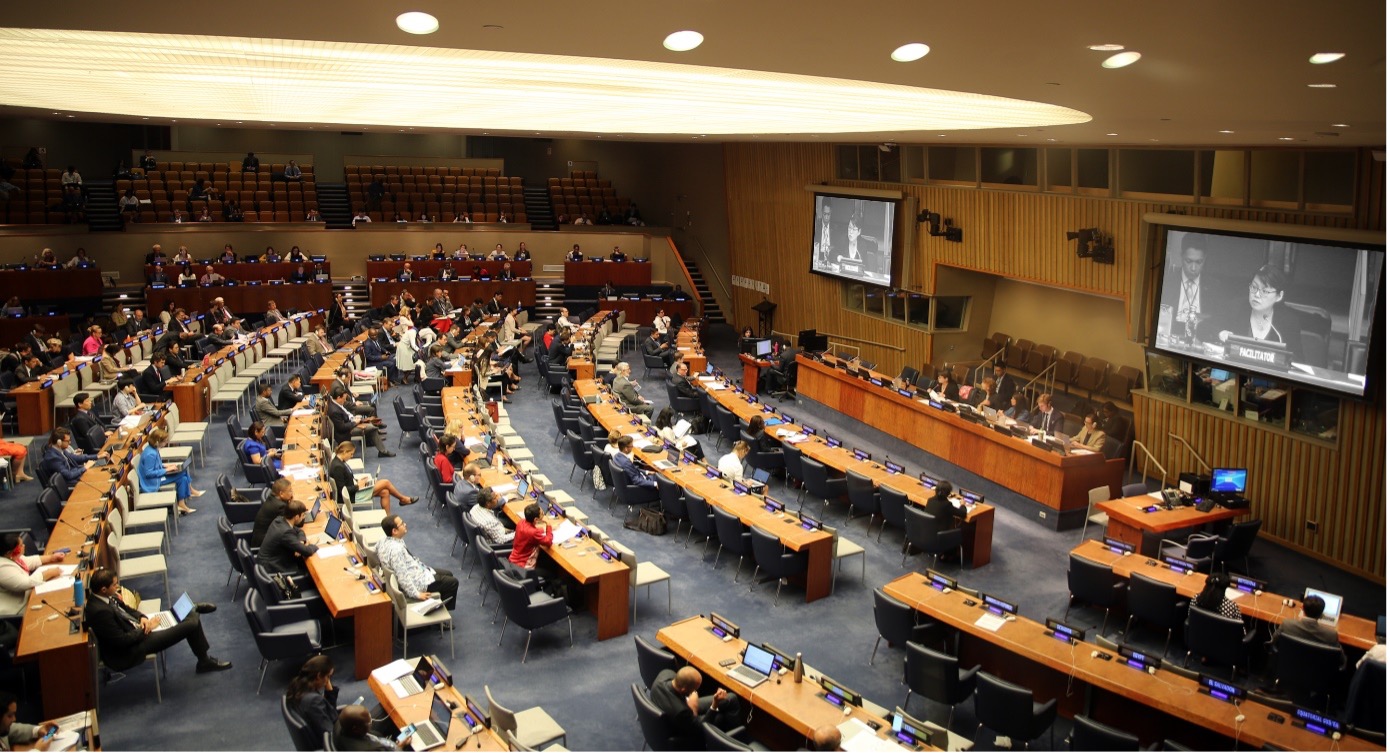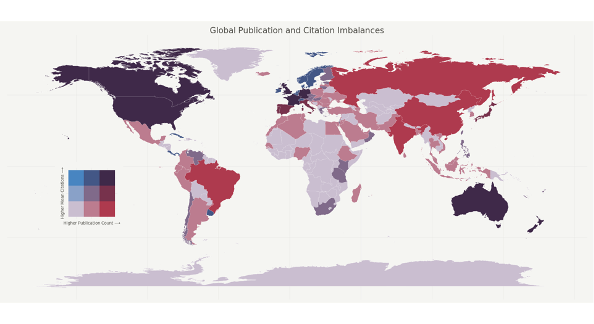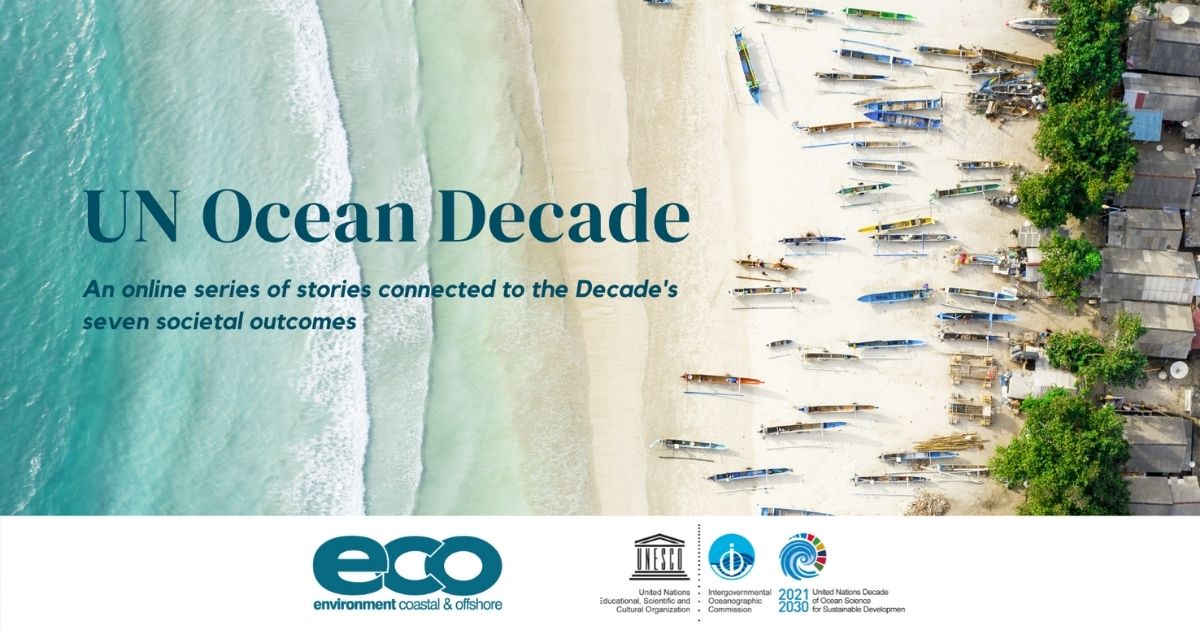By Alice B.M. Vadrot, University of Vienna
MARIPOLDATA is a European Research Council research project running from November 2018 to October 2023 at the University of Vienna. We use ongoing negotiations on a new international legally binding instrument under the United Nation Convention on the Law of the Sea (UNCLOS) on the conservation and sustainable use of marine biological diversity of areas beyond national jurisdiction (BBNJ) to develop and apply a new multiscale methodology for grounding the analysis of science-policy interrelations in empirical research. In the following, we will outline why this matters and provide insights into our research.
International negotiations are important sites for state and non-state actors to discuss and determine rules for environmental protection. Since 2018, scholars and practitioners alike keep a tab on negotiations determining how we will conserve and use marine biodiversity beyond national jurisdiction (BBNJ) in the future. These negotiations aim to close gaps in the Law of the Sea related to marine biodiversity beyond the limits of 200 nautical miles from the coast. In 2018 and 2019, more than 100 government representatives and several non-state actors, including WWF, DOSI, and IUCN, met three times in the United Nation Headquarters in New York for two weeklong conferences. Following diplomatic protocol within a highly formalized setting, they bargained over the contents of a new legally binding instrument expected to solve the lack of accountability regarding High Seas biodiversity. After a long break imposed by COVID-19, diplomats may return to the negotiating table at the end of August 2021 to adopt a treaty text that will hopefully be ambitious enough to make up for the past's governance failure.
Without scientific evidence on the tremendous effects of expanding human activities on marine ecosystems and efforts by scientific communities to raise public and political awareness on the need to change the legal framework for ocean protection, we would unlikely be able to observe the birth of a new ocean treaty. Science plays a pivotal role in setting policy issues and informing international negotiations. But how exactly does science influence international negotiations? What is the science that makes it to the negotiating table? Who uses science for what purpose? What about the science that fails for whatever reason to be visible and recognized as relevant?
Finding responses to these questions is a challenging endeavour. It necessitates new methodological approaches and a case that allows for observing empirically traceable objects across diplomatic practice and scientific fields. The BBNJ negotiations provide us with such a case. The treaty-making process, its actors, their interaction, interests and strategies, figure as entry points for our research on the negotiations that we observe close-by.
We use collaborative event ethnography to take systematic field notes about what we observe and track the role that science plays during the negotiations. Relevant observations include, for instance, when Pacific Small Island Developing States (PSIDS) refer to 'ecological connectivity' to highlight the need for more ambitious environmental impact assessments. When during a side event, scientists inform diplomats about research endeavours in the High Seas and the potential effects of a treaty that is not sensitive to the needs of science and the actual day-to-day research practices. Or, when a state representative questions climate change effects on the ocean by referring to alternative research results and interpretations of the status quo.
 Plenary of the third Intergovernmental Conference of the BBNJ negotiations (UN Headquarters in New York) Photo credits: http://enb.iisd.org/oceans/bbnj/igc3/ (wed 28th ENB)
Plenary of the third Intergovernmental Conference of the BBNJ negotiations (UN Headquarters in New York) Photo credits: http://enb.iisd.org/oceans/bbnj/igc3/ (wed 28th ENB)
In a negotiation setting, science is also a driving force of conflict and dissent. This is most evident in debates about the regulation of access and use of marine genetic resources (MGRs) for both scientific and commercial purposes, which divides those states that have the means to explore and exploit MGRs and those that have not. The longstanding discrepancies between developed and developing countries to conduct ocean science, indeed, anticipate the need for capacity building and marine technology transfer, which constitutes one of the final agreement's four package elements.
Capacities to develop and use science and draw on data infrastructures to monitor marine protected areas or conduct environmental impact assessments, which are two other key package elements of the new treaty, are unequally distributed among states. Especially the least developed countries argue that they need scientific support to fulfil the obligations that the BBNJ agreement will impose on governments when entering into force. Claims for monetary and non-monetary support from developed countries that should assist developing countries in building their scientific infrastructures are often justified with the specificity of High Seas marine ecosystems lying outside national jurisdiction and requiring that its protection be treated as "a common concern of humankind".
While the deeply rooted inequalities between the Global North and South become evident during the negotiations, our observations of how this conflict unfolds on-site are limited. We can observe how state and non-state actors talk about science or use scientific representations of marine biodiversity to substantiate their claims, how scientists engage in the process and become actors themselves. However, we cannot map global inequalities within science and assess the place that science relevant in the negotiations holds within the scientific field itself.
In order to capture inequities beyond the negotiation setting, the MARIPOLDATA project expands our study focus and proposes a new methodology for the study of science-policy relations by combing event ethnography with the social study of scientific fields. We combine bibliometric analyses with Oral History of Science methodologies. In other words, we produce maps representing the temporal, geographical, and topical development of the marine biodiversity field and complement this quantitative picture with interviews with ocean scientists who experienced the development of the field of marine biodiversity and how it has been shaped by new technological developments, legal frameworks, and economic and political interests. Furthermore, we selected three cases, Brazil, the European Union, and the United States, to study marine biodiversity monitoring policies and practices on-site to understand differences in research practices and priorities.
 This figure was published in Marine Policy, Tolochko, P and Vadrot, A, 124 (2). Tolochko, P. and Vadrot, A., The usual suspects? Distribution of collaboration capital in marine biodiversity research, Copyright Elsevier (2020).
This figure was published in Marine Policy, Tolochko, P and Vadrot, A, 124 (2). Tolochko, P. and Vadrot, A., The usual suspects? Distribution of collaboration capital in marine biodiversity research, Copyright Elsevier (2020).
The MARIPOLDATA project is led by Alice Vadrot, and we- an interdisciplinary team of social science researchers including Petro Tolochko, Arne Langlet, Ina Tessnow-von Wysocki, Paul Dunshirn, Silvia Ruiz, and Emmanuelle Brogat- have almost three years of research ahead of us where we will hopefully witness the adoption of the final BBNJ treaty. The recently launched UN Decade of Ocean Science makes us confident that there is broad recognition of the above-described challenges and inequalities within natural science communities. We also hope that our work on marine biodiversity science's political aspects and its role in ongoing treaty negotiations will be relevant beyond the social sciences. International politics play an important role in legitimizing and authorizing scientific concepts, data sources, and criteria and how this influences national environmental protection and monitoring priorities. In this regard, we hope to enrich debates on how to design better science-policy interfaces for the future of our ocean.
Discover More
Check our website and our latest publications:
Vadrot, A.B.M, Langlet, A., Tessnow-von Wysocki, 2021. Who owns marine biodiversity? Contesting the world order through the ‘common heritage of humankind’ principle Environmental Politics (forthcoming)
Vadrot, A.B.M, Langlet, A., Tessnow-von Wysocki, I., Tolochko, P., Brogat, E., Ruiz-Rodríguez, S.C. 2021. Marine Biodiversity Negotiations During COVID-19: A New Role for Digital Diplomacy? Global Environmental Politics (published inline)
Tolochko, P. and Vadrot, A. 2021. The usual suspects? Distribution of collaboration capital in marine biodiversity research. Marine Policy 124 (2).
Tessnow-von Wysocki, I. and Vadrot, A. 2020.The Voice of Science on Marine Biodiversity Negotiations: A Systematic Literature Review. Frontiers in Marine Science 7: 614282.
Vadrot, A.B.M. 2020. Multilateralism as a ‘site’ of struggle over environmental knowledge: the North-South divide. Critical Policy Studies 14(2): 233-245.
This article is part of an online series dedicated to the UN Ocean Decade. One story will be published each week that is related to initiatives, new knowledge, partnerships, or innovative solutions that are relevant to the following seven Ocean Decade outcomes. Access the special digital issue dedicated to the Ocean Decade here.





